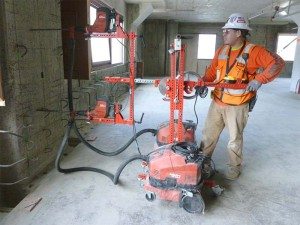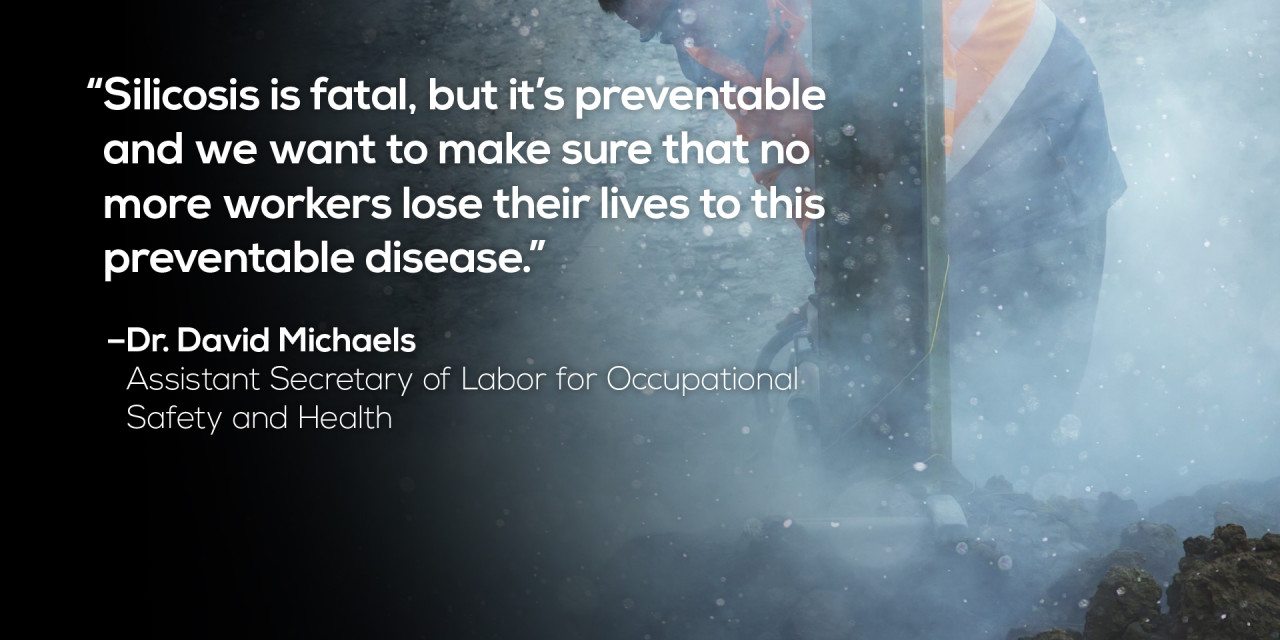The Labor Department on Thursday issued long-awaited rules on workplace exposure to respirable silica, a potentially fatal mineral known to cause lung cancer, silicosis, chronic obstructive pulmonary disease (COPD), and kidney disease.
Labor’s Occupational Health and Safety Administration (OSHA) issued two separate standards, one for Construction and the second for General Industry and Maritime. Both standards go into effect June 23, 2016, but the construction industry has just one year to comply with most requirements—by June 23, 2017. General industry and maritime have until June 23, 2018, to comply.
The standard also goes into effect on June 23, 2018, for hydraulic fracturing (fracking), for all provisions except engineering controls; those functions must be in compliance by June 23, 2021.
The standards set the permissible exposure limit (PEL) for respirable crystalline silica at 50 micrograms per cubic meter of air, averaged over an eight-hour shift. Other key provisions include the following.
- Requires employers to: use engineering controls (such as water or ventilation) to limit worker exposure to the PEL; provide respirators when engineering controls cannot adequately limit exposure; limit worker access to high exposure areas; develop a written exposure control plan; offer medical exams to highly exposed workers; and train workers on silica risks and how to limit exposures.

Limiting silica exposure: This innovative drill jig was designed by a University of California Ergonomics Program team, to reduce physical stress and fatigue and limit exposure to silica. Photo courtesy of OSHA.
- Provides medical exams to monitor highly exposed workers and gives them information about their lung health.
- Provides flexibility to help employers—especially small businesses—comply with the rules.
Detailed information on the new rules is available at OSHA silica webpage.
A long time coming
The updated silica standards have been in the works for years, making their way through an arduous rulemaking process that included extensive study, hearings and revisions. Resistance from affected industries put a serious drag on efforts to update the standards.
Awareness of the hazards of silica dates back to the early 20th century, catalyzed by a wave of worker deaths occurred in the 1930s. The Labor Department set standards to limit worker exposure in 1971, when OSHA was created, and those rules are “outdated and do not adequately protect workers from silica-related diseases,” OSHA said. “Furthermore, workers are being exposed to silica in new industries such as stone or artificial stone countertop fabrication and hydraulic fracturing.”
OSHA said the final rule issued Thursday is based on a full review of scientific evidence, industry consensus standards, and extensive stakeholder input. The rule was proposed in September 2013, and OSHA held 14 days of public hearings during which more than 200 stakeholders presented
testimony, and more than 2,000 comments were submitted. Significant changes included greater employer flexibility in choosing how to reduce levels of respirable crystalline silica while maintaining or improving worker protection, OSHA said.

Controlling silica exposure: This rotary hammer is equipped with a shroud around the drill bit, attached to a vacuum system that collects dust and bits of concrete. Photo: OSHA, courtesy of DeWalt
Widespread exposure
OSHA estimates that 2.3 million workers are exposed to respirable crystalline silica in their workplaces, including 2 million construction workers who drill, cut, crush, or grind silica-containing materials such as concrete and stone, and 300,000 workers in general industry operations such as brick manufacturing, foundries, and hydraulic fracturing. “Responsible employers have been protecting workers from harmful exposure to respirable crystalline silica for years, using widely-available equipment that controls dust with water or a vacuum system,” OSHA said.
In construction, crystalline silica exposure can occur from activities that involve the use of structural clay, concrete, paints and coatings, refractory products, cut stone and stone products, and from abrasive blasting activities. Quartz, the most common form of silica, is a component of sand, stone, rock, concrete, brick, block, and mortar. Materials containing quartz are found in a wide variety of workplaces.
Silica dust is hazardous when very small (respirable) particles are inhaled. These respirable dust particles can penetrate deep into the lungs and cause disabling and sometimes fatal lung diseases, including silicosis and lung cancer, as well as kidney disease, OSHA says.



